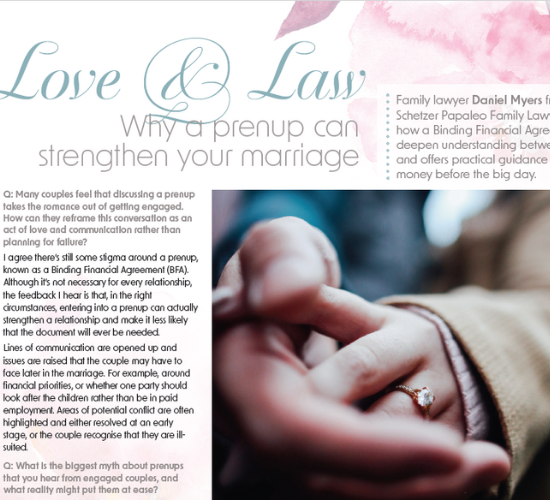Building on Jodylee Bartal’s recent interview with the Sydney Morning Herald: Who gets the pet – and other big changes for divorcing couples, Camille Saunders-Browne and Stella Kahn-Allen explore the issue in further depth.
It is increasingly common to hear individuals refer to their pets as “fur babies”, as exemplified by one of our Senior Associates, James Caraglanis, who identifies himself as a “cat dad”.
As more people move away from having children due to increased financial and career aspirations, many are turning to the fluffier option to fill a void.
Dogs, cats and other companion animals are increasingly being regarded as primary members of the household, with a 2023 study by the Australian Institute of Family Studies (AIFS) finding that 52% of Australians consider pets to be family members.
Until very recently, the court treated all animals, including family pets, as personal property, meaning they were considered possessions like furniture or vehicles and their ownership was determined by factors such as their monetary value, who paid for them or whose name was on the documents, often overlooking their sentimental value.
On 10 June 2025, significant changes were made to the Family Law Act 1975 (the Act), redefining pets as “companion animals”, rather than as mere property.
A companion animal is defined as “an animal kept by the parties to a marriage (or a de facto relationship) or either of them, primarily for the purpose of companionship.”
Any species of animal owned by a couple as a companion animal including cats, guinea pigs, horses, reptiles – you name it – will be covered under the new sections of the Act. Exclusions include assistance animals, an animal kept as part of a business, an animal kept for agricultural purposes, or an animal kept for use in laboratory tests or experiments.
While companion animals are still considered property, they now fall into a distinct category of property in which different considerations apply when determining ownership.
The matters to be considered in making an order about a companion animal are:
- the circumstances in which the companion animal was acquired;
- who has ownership or possession of the companion animal;
- the extent to which each party cared for, and paid for the maintenance of, the companion animal;
- any family violence to which one party has subjected or exposed the other party;
- any history of actual or threatened cruelty or abuse by a party towards the companion animal;
- any attachment by a party, or a child of the marriage, to the companion animal;
- the demonstrated ability of each party to care for and maintain the companion animal in the future, without support or involvement from the other party; and
- any other fact or circumstance which, in the opinion of the court, the justice of the case requires to be taken into account.
Whilst the first three factors have been considered in reported cases involving pets, additional factors include considerations specific to companion animals and not applicable to other types of property. Therefore, these factors are relevant only to the “companion animal” subcategory.
There are three types of orders that the court can make with respect to companion animals:
- that only one party to the marriage, or only one person who has been joined as a party to the proceedings, is to have ownership of the companion animal; or
- that the companion animal be transferred to another person who has consented to the transfer; or
- that the companion animal be sold.
The Court will not make an order for joint ownership or a shared care arrangement if it is a companion animal. This was demonstrated in Davenport & Davenport (No.2) [2020], having determined a lack of jurisdiction to order shared care arrangements for pets akin to those for children.
Should a couple wish to consider shared care arrangements for companion animals they will need to do so outside of Court, potentially via mediation, however, any such shared arrangement will not be binding or enforceable.
Family Violence
The reforms also address more serious concerns, including the involvement of animals in the context of family violence.
According to a 2024 report by AIFS, fears for the safety of family pets can prevent or delay family violence victims leaving perpetrators.
Violence against family animals, whether intended to control or scare other people in the household or not, is considered a form of domestic and family violence. Appropriately, the reforms now require consideration of the history of family violence when determining the care of a pet.
Furthermore, if a victim has fled to accommodation where keeping their pet is not permitted, the new laws will allow for a court order to transfer the animal to another safe person. However, it remains to be seen whether the court will hear such cases on an urgent or interim basis.
These changes will provide more clarity to separating couples who are trying to determine who should keep the pet, and lead to large numbers of companion animals (and family violence victims) gaining protection from future abuse.
If anything in this article resonates with you or someone you know, we can assist.




